Greatest F1 Comeback Drives in History

Follow Us
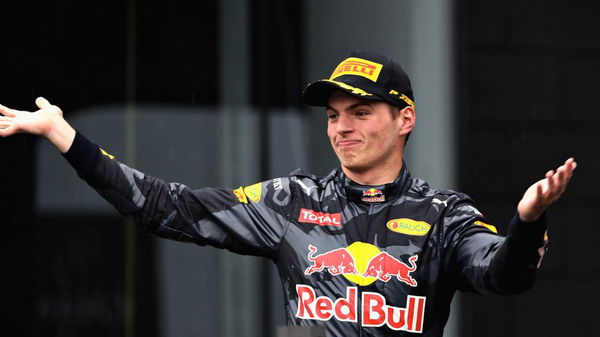
via Imago
Max Verstappen
A comeback is an art, extremely difficult to execute, yet immensely satisfying upon completion. In any sport, a comeback from being down in the dumps invokes a special feeling. Especially in the world of Formula 1, where every second makes an enormous difference, comebacks are few and far within. However, Formula 1 in its illustrious history has seen some brilliant comeback drives. One’s worthy of being recounted time and time again. Let’s have a look at five of the greatest F1 comeback drives the sport has ever witnessed.
Top 5 Greatest F1 Comeback Drives
5. A rain-soaked Canadian thriller:
ADVERTISEMENT
Article continues below this ad
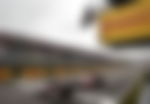
via Imago
2011 Canadian Grand Prix – Sunday, Circuit Gilles Villeneuve, Montreal, Canada, 12th June 2011, Jenson Button, McLaren MP4-26 Mercedes.
Driver- Jenson Button
Race- Canada 2011
A rain-soaked Canadian Grand Prix brought out Jenson Button‘s best. The race lasted 4 hours and 4 minutes and saw a record 5 safety car deployments. The Brit endured 2 collisions, 6 pitstops and a drive-through penalty. But he still went on to win the race. It what was considered to be one of the greatest F1 comeback drives in modern F1.
Trending

Liam Lawson’s Surprise Contract Clause Threatens Daniel Ricciardo’s RB Seat
April 24, 2024 11:15 AM EDT
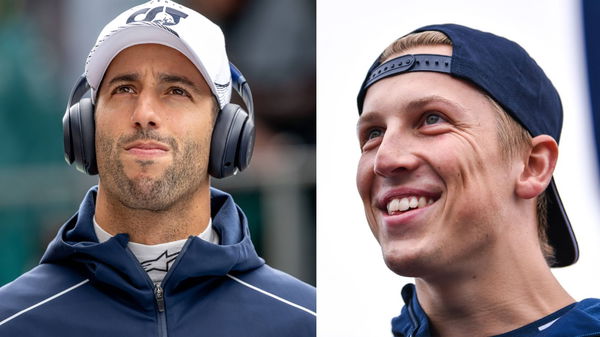
Daniel Ricciardo To Be Replaced by Liam Lawson After Miami, F1 Pundit Dishes Out Harsh Verdict After Australian’s “Amateur Mistake”
April 17, 2024 11:14 AM EDT
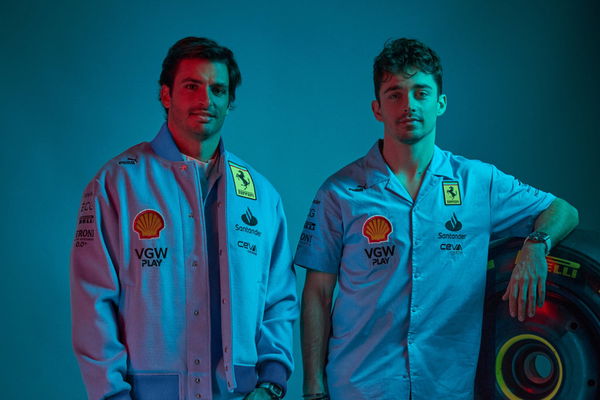
What Is Azzurro La Plata and Azzurro Dino? Significance of Ferrari’s Historic Change to a Blue Livery for Miami GP
April 24, 2024 04:52 PM EDT
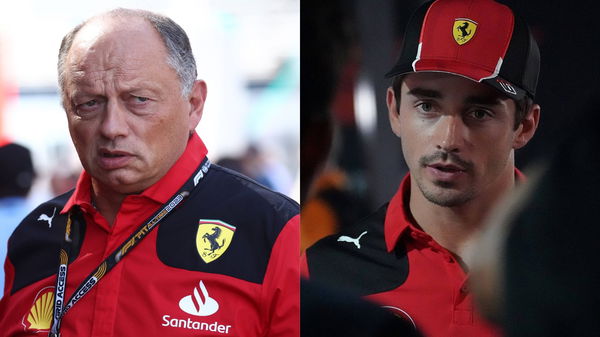
“[Charles] Leclerc Doesn’t Care About Ferrari”: F1 Insider’s Brutal Blow to Fred Vasseur & Co. Has Racing Community Lashing Out
April 24, 2024 05:00 PM EDT
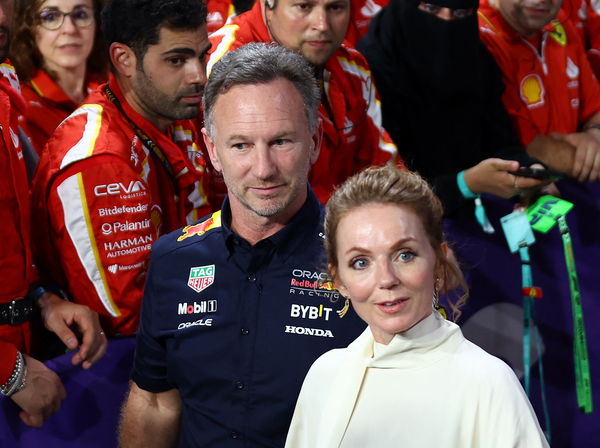
F1 Rumor: Christian Horner and Wife Geri to Publicly Reveal All Details on Leaked Chat Scandal
April 22, 2024 04:10 PM EDT
Get instantly notified of the hottest F1 stories via Google! Click on Follow Us and Tap the Blue Star.

Follow Us
The race started behind the safety car in extremely wet conditions, with Button lining up 7 on the grid. Vettel pulled away to an early lead with the Ferrari of Fernando Alonso hot on his heels. Further back, Button squeezed his teammate Lewis Hamilton into the wall on the run down to turn 1. Hamilton’s car had to be retired as a result of a broken suspension, thus bringing out the safety car. Jenson’s woes continued, as he was awarded a stop-go penalty for making up ground during the safety car conditions. The Brit re-joined the race in a lowly 15 place.
More drama ensued with the race being red flagged on lap 26, as a thunderstorm hit the circuit. At the restart, Jenson found himself in more trouble. He collided with Fernando Alonso bringing out yet another safety car. The collision brought an end to Alonso’s race, whereas Button miraculously suffered only a puncture. He wrestled his car back to the pits and re-joined the race, albeit in last place.
What followed was one of the best displays of driving modern Formula 1 has ever seen. He swept past the field with renewed enthusiasm and vigour and moved into the points. Soon, he closed down on the front-running trio of Vettel, Webber, and Schumacher. He made light work of Schumacher and Webber, both drivers struggling on their worn out tires. Button soon found himself on Vettel’s tail and put immense pressure on the German. Vettel cracked and ran wide on the second corner of the last lap. Button didn’t need a second invitation and swept past him to secure the win of his career. It was one of the most legendary F1 comeback drives.
Watch how it happened:
4. The Iceman triumphs in Suzuka:

via Imago
Raikkonen- Suzuka 2005
Driver: Kimi Raikkonen
Race: Japan 2005
Kimi Raikkonen pulled off arguably one of the greatest drives of his career in Suzuka in the year 2005.
Rains plagued Suzuka in the dying moments of the single lap qualifying system. This forced most of the frontrunners to line up in the back of the grid. Raikkonen lined up in a lowly 17 position, and out of contention. A podium finish, let alone a victory, was a Herculean task. Pole-sitter Ralf Schumacher had a great start while local hero Takuma Sato ran wide and very nearly collided into Barrichello. Raikkonen made excellent progress by moving up to 10 place at the end of the first lap. A collision between Raikkonen’s teammate Montoya and Jacques Villeneuve brought out the safety car.
Kimi and the rest of the front-runners sliced through the field. Alonso was involved in a tussle with Michael Schumacher for 5 place, whereas Raikkonen was biding his time. Up front, Button and Webber were engaged in a battle for 2nd. Both drivers made the most of their unusually high qualifying positions.
Midway through the race, Renault’s Giancarlo Fisichella had taken a sizeable 20 seconds lead over the rest of the pack. The Italian, who had not pitted previously, was making the most of the clean track in front of him. Raikkonen emerged ahead of Alonso after his pitstop and made light work of passing Schumacher for 4 place. Ahead of him, both Webber and Button were carrying light fuel loads and pitted soon. Kimi was promoted to 2 place, a mere 9 seconds off Fisichella with just 9 laps to go.
The Iceman set a string of fastest laps and soon appeared at the Italian’s tail with 3 laps to go. Fisichella did his best to keep the McLaren at bay, with a brilliant display of defensive driving. However, in the last lap, a determined Raikkonen pulled off a brilliant manoeuvre on the run down to turn 2. One of the greatest F1 comeback drives Suzuka has ever witnessed, was finally complete.
Watch his last gasp overtake here :
3. Taming the ‘Ring:

via Imago
Fangio drives his Maserati around the Nurburgring
Driver: Juan Manuel Fangio
Race: Germany 1957
Juan Manuel Fangio is widely regarded as one of the greatest drivers the sport has ever seen. He produced one of the most spectacular F1 comeback drives in the history of Formula 1 at the dreaded Nurburgring in 1957. He raced in an era when the sport was still in its nascent stages. In unreliable, untamed cars with virtually no safety considerations whatsoever, Fangio dominated, winning five world championships in seven years. His historic victory in ’Ring in 1957 gifted him his 5 world championship.
This is not an account of a comeback from a lowly qualifying position (Fangio started on pole). If anything, it is present among the greatest comebacks ever because of the circumstances under which it took place. Fangio started the race in pole position, ahead of the two Ferraris of Mike Hawthorn and Peter Collins. The Ferraris were the only threats for victory victory from him.
The Argentinian took a gamble with his fuel strategy, starting the race with only half a tank of fuel. He was counting on the weight loss and better grip offered as a result of running low fuel to give him a sizeable advantage over the Ferraris. After amassing a 30 second lead over the Ferraris, Fangio pitted for his mandatory pit stop, whereas crucially, the Ferraris didn’t have to do as they had enough fuel load to complete the race. The pit stop did not go in Fangio’s favour, as the crew struggled with a wheel nut problem. Fangio rejoined the race in 3rd.
A 45-second gap is a sizeable advantage to possess in a Formula 1 race. With less than 9 laps to go, there was no way that Fangio could even compete for second place. However, the Argentine had other ideas, as he embarked on one of the greatest F1 comeback drives in the history of the sport. Over the next 10 laps, Fangio broke the lap record at the Nurburgring a whopping 9 times, as he drastically reduced the gap to the Ferraris in front. In his very first lap out of the pits, he closed the gap to second-placed Collins by a massive 15 seconds. He eventually caught up with them and at the beginning of the 21 lap, he made light work of Collins and, soon had race leader Hawthorn eating his dust.
The crowd couldn’t believe what they had seen, as Fangio emerged victoriously and clinched his 5 world championship. It was a demonstration of motor racing in its absolute limit, in the most dangerous and barbaric track in the world at that time, and it’s extremely unlikely that such a feat will ever be repeated again. The Nurburgring is one thing, but the Nordschleife is a completely different beast. If you can say that you have completed one of the best F1 comeback drives at the Nordschleife, you have my utmost respect.
Watch the highlights of that brilliant drive here:
2. First of many – A Brazilian onslaught:

via Imago
Senna wins his first world championship in Suzuka 1988.
Driver: Ayrton Senna
Race: Japan 1988
Suzuka has provided the scene for some of Formula 1’s greatest races, and the Japanese Grand Prix in 1988 is right up there at the top. Ayrton Senna clinched his maiden world championship from his teammate and fierce rival Alain Prost , and oh boy, did he have to work for it.
The 1988 season saw McLaren Honda completely dominate the rest of the field with it’s two incredibly talented drivers battling it out fiercely for the world championship title. The vastly superior McLaren MP4-4 rendered the rest of the field inconvenient, ensuring that the championship battle was only a two-horse race. Ayrton Senna came to Japan, seeking a win over Alain Prost to put his championship battle to bed. The manner in which he achieved it left everybody stunned.
Senna qualified on pole position and a straightforward victory in Japan beckoned. However, luck had other ideas as he stalled at the start of the race and dropped to 14 position at the end of the first corner. But Senna, aided with the vastly superior MP4-4, powered through the field and regained 6 places by the end of the second lap. By the end of lap 4, the Brazilian had stormed to 4 place, demoting the Benetton of Alessandro Nannini to 5 place.
The rain Gods decided to make things more interesting, and soon a periodic drizzle fell across the circuit. Senna was in his element now, he exploited his trademark skill in the wet as he went in pursuit of race leader Alain Prost. By lap 14, Senna had moved into 3 place and the Brazilian was soon promoted to 2 place after Ivan Capelli’s March retired with electrical problems on lap 19.
Soon, Senna had Prost in his sight. It was the battle everybody was looking forward to. Finally, on lap 27, the inevitable happened. Senna overtook Prost for 1 place on the run down to the first corner as the Frenchman’s approach was slightly hindered by the presence of lapped Andrea de Cesaris. Prost attempted to regain his lost position, but his challenge soon fizzled out, with the Frenchman’s car slowing down as a result of a gearbox issue. Ayrton Senna’s incredible comeback was complete, with more than half the race remaining. It was a peerless performance by the Brazilian, clearly one of his most famous F1 comeback drives ever.
Watch the highlights of the 1988 Japanese Grand Prix taken from the biography- Senna:
1. Schumi magic at Spa:

via Imago
Schumacher battles with Hill in Spa 1995
Driver: Michael Schumacher
Race: Belgium 1995
Any ‘greatest ever’ article would be incomplete without mentioning Michael Schumacher’s remarkable career in Formula 1. The German’s glittering career, albeit laced with dominance has seen him display many stirring recovery drives, and this particular one in the Belgian Grand Prix in 1995 is surely up there among his greatest ever comeback drives.
ADVERTISEMENT
Article continues below this ad
The 1995 season revolved around the Schumacher-Hill rivalry, both of them qualifying low on the grid in Spa with Hill in 8 place and Michael in 17. This, coupled with ever-changing weather conditions persisting over the circuit meant that this particular race in Spa had all the elements required to make it a timeless classic. Schumacher was off the blocks extremely quickly, slicing his way past the field into 6 place by the end of lap 5, only 7 seconds behind the lead car- the Williams of David Coulthard. Hill was rapidly gaining too, and soon, the Williams no.1 was also in the hunt. Coulthard retired with a gearbox problem, and soon, Schumacher and Hill were contesting for the lead.
As rain began to fall, Hill pitted for wet tires, while Schumacher crucially stayed out. Spa’s varying topography meant that certain parts of the circuit were wet and other parts were dry. Hill soon caught up with Schumacher, as the German struggled on the wet parts of the circuit, his slicks providing no grip whatsoever. Schumacher held his line and blocked Hill’s progress quite dubiously, but was forced to give way to the Brit on lap 26.
And almost immediately, the rain stopped and Schumacher soon passed Hill, after which the Williams pitted for slicks and began chasing him again. And yet again, the heavens opened three laps later and a heavy downpour followed, with all the drivers pitting for wet tires. The extra stop for Hill gave Schumacher a huge lead and the German brought the car home a massive 20 seconds ahead of his nearest competitor. Schumacher reigned supreme in the ever-changing weather situations, displaying extreme control and aggression in the face of adversity. He was later reprimanded and fined for his aggressive defence on Hill. But there can be no arguing that his outing in Spa was right there among the greatest races of his career. This was one of the most scintillating f1 comeback drives and cemented Schumacher’s status as the ‘Rainmeister’
ADVERTISEMENT
Article continues below this ad
Watch the race highlights here:
Written by:
